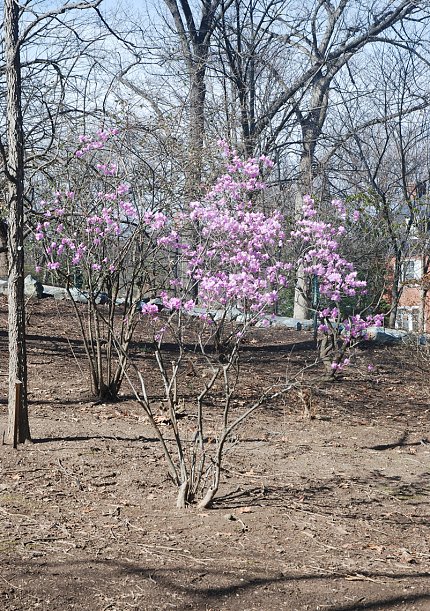Robust Azalea Leads Off Campus Spring

Photo: Rich McManus
This azalea, shown in full bloom on Feb. 28, was among the first harbingers of spring on the NIH campus, along with daffodils and crocuses. Located on the hillside between Bldgs. 31 and 15K, it is an “early blooming deciduous azalea—that is, an azalea that loses its leaves in the winter,” explained Brandon Hartz, NIH landscape architect in the Office of Research Facilities. “These deciduous types are far less commonly planted than the evergreen types that are everywhere. There are at least 20 different species of deciduous azalea and they are commonly hybridized when nursery-grown, so [the photo above] is likely a hybrid of two different species to get the best traits of both. It is a lavender flowering deciduous azalea, which is even less common since most deciduous azaleas have warmer flower tones like white, yellow or orange. Azaleas are in the rhododendron genus as well,” cautioned Hartz, “so like rhododendrons, they are prone to deer damage.”
